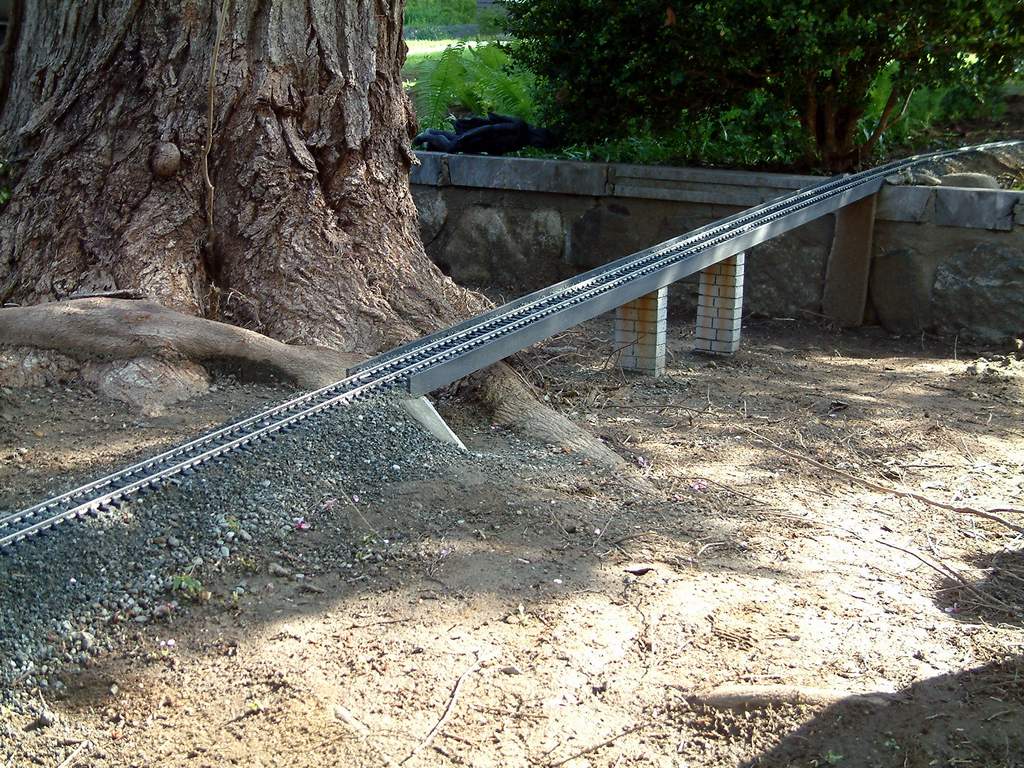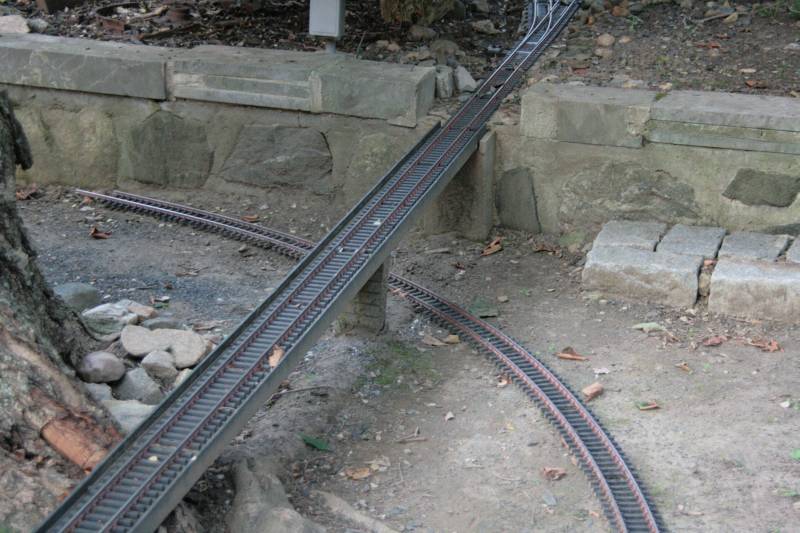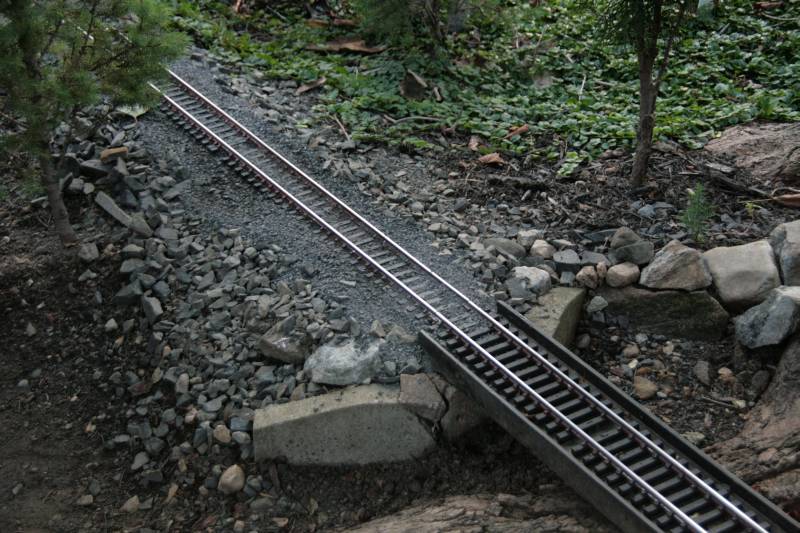Jon, ya know, and speaking of bridges, I have been fantasizing, which is what I do best, about running some track in the good part of our garden (my wife’s flower part) where I envision the track crossing over a trestle. I peeked at Bridgemasters site, and they have a curved trestle which holds two, 8-foot diameter track sections. Each trestle costs $89 and I’d possibly need two. BM also sells individual bents at various prices. Since I don’t own a table saw, I’d probably be better off just buying ready-to-wear. But I’ve got my Porsche restoration project (I’d like to get the air cleaner, cooling ducts, and rear deck lid hinges painted), plus my camera stuff (I just got a camera with Wi-Fi), so guess how much track will get laid? Still, seeing my trains running through the garden would be cool. And it would piss off the racoons!
Meanwhile, good luck with your endeavour. Lookin’ good.



